Acid staining concrete countertops is a popular technique that enhances the aesthetic appeal of concrete surfaces by adding rich, translucent color variations. This method is favored for its ability to mimic the look of high-end materials like marble and natural stone at a fraction of the cost. The process involves applying a mixture of water, acid, and inorganic salts to the concrete surface, which reacts with the minerals in the concrete to produce unique, variegated color effects. The outcome is a one-of-a-kind design that can elevate the appearance of any kitchen, bathroom, or outdoor countertop.
The first step in acid staining concrete countertops is thorough preparation. This involves cleaning the surface meticulously to remove any dirt, grease, or sealers that could impede the staining process. The concrete must be fully cured for at least 28 days to ensure the stain reacts properly. Any cracks or imperfections should be repaired, and the surface should be smooth, as these flaws can affect the final appearance. It’s also crucial to mask off any areas that shouldn’t be stained, such as adjacent walls or cabinetry, to prevent accidental staining.
Once the surface is prepared, the next step is to apply the acid stain. Depending on the desired effect, this can be done using various methods, including spraying, brushing, or sponging. Spraying is the most common technique as it provides an even application and helps to avoid brush marks. The stain should be applied in thin, even coats, allowing it to penetrate the surface. It’s essential to wear protective gear, such as gloves, goggles, and a respirator, as the acid can be harmful if it comes into contact with skin or is inhaled.
The acid stain should be left to react with the concrete for the recommended time, usually between 4 to 24 hours, depending on the desired intensity of color. During this period, the acid reacts with the minerals in the concrete, producing a chemical reaction that creates color variations. It’s important not to disturb the surface during this time to ensure an even reaction. The color will continue to develop over time, so patience is key.

After the stain has fully reacted, the next step is to neutralize the acid residue. This is typically done using a solution of water and baking soda, which is applied to the surface and scrubbed in with a brush. This neutralization step is crucial to stop the chemical reaction and remove any remaining acid, which could damage the concrete if left untreated. Once neutralized, the surface should be thoroughly rinsed with clean water to remove any residue.
The stained surface must be allowed to dry completely before sealing. Depending on the conditions, this can take anywhere from a few hours to a few days. Ensuring the surface is entirely dry is critical, as any remaining moisture can affect the adhesion and effectiveness of the sealer. Using fans or dehumidifiers can help speed up the drying process, especially in humid environments.
Sealing the stained concrete is the final step in the process. The sealer protects the surface from stains, scratches, and wear, and enhances the color and finish of the acid stain. There are various types of sealers available, including acrylic, epoxy, and polyurethane, each offering different levels of protection and sheen. The sealer should be applied in thin, even coats, allowing each coat to dry thoroughly before applying the next. Multiple coats are often necessary to achieve the desired level of protection and gloss.
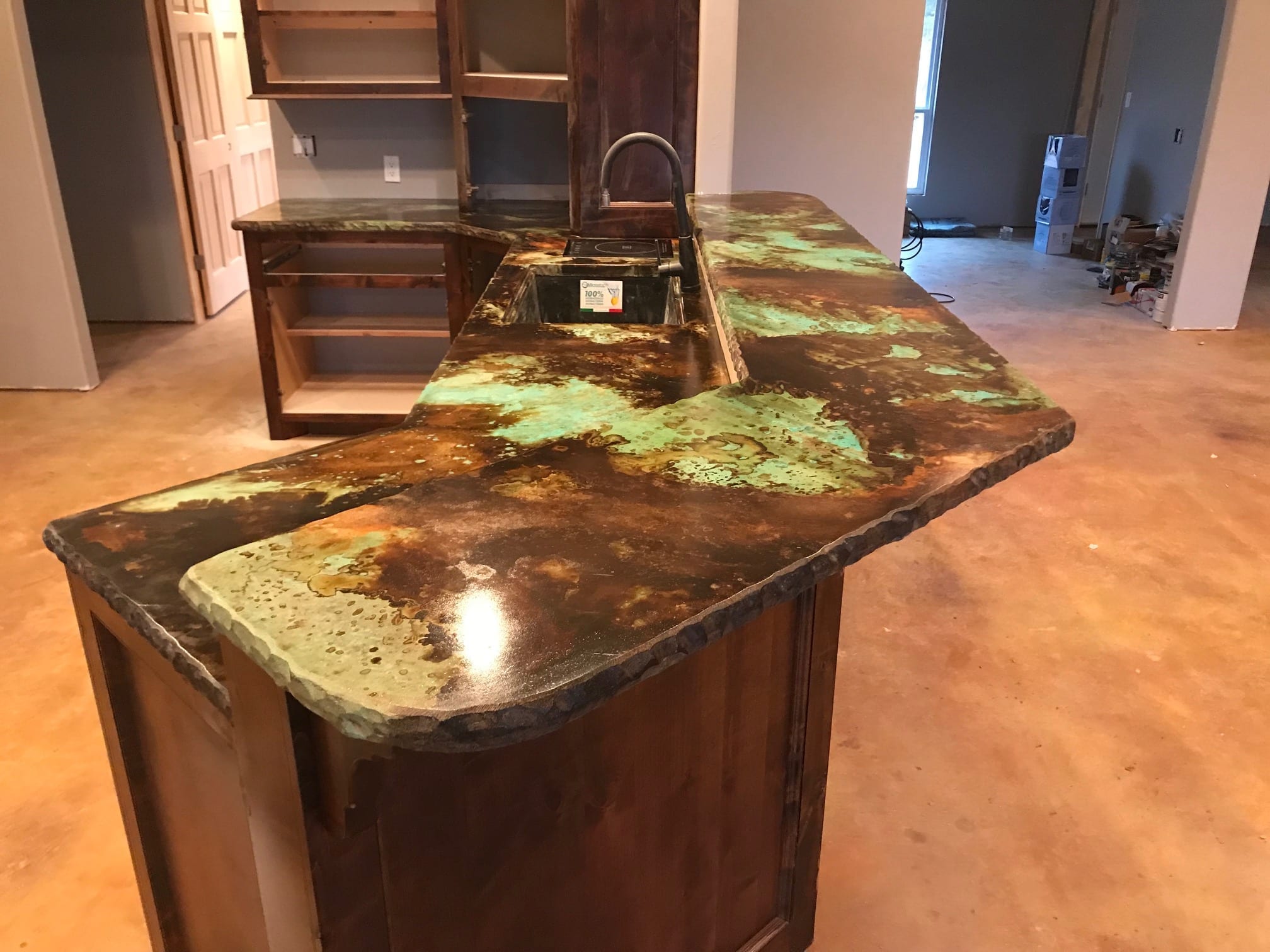
Maintenance of acid-stained concrete countertops involves regular cleaning and periodic resealing. Cleaning should be done with a mild detergent and water, avoiding harsh chemicals or abrasive cleaners that can damage the sealer. Depending on the usage and traffic, resealing may be required every few years to maintain the protection and appearance of the surface. It’s also advisable to use cutting boards and trivets to protect the countertop from direct cuts and hot items.
One of the main advantages of acid-stained concrete countertops is their durability and longevity. Concrete is inherently strong and resistant to damage, and when properly sealed, it can withstand the rigors of daily use. Additionally, the unique color variations created by acid staining are permanent and will not fade or peel over time, unlike surface coatings or paints.
Another benefit is the versatility of acid-stained concrete. It can be customized to match any design aesthetic, from rustic to modern, and can be used in a variety of settings, including kitchens, bathrooms, outdoor kitchens, and bars. The ability to create custom colors and patterns allows for a high level of personalization, making each countertop truly unique.
Cost-effectiveness is another significant advantage. Acid-stained concrete countertops are generally more affordable than natural stone or high-end materials, while still providing a luxurious look. The materials used in acid staining are relatively inexpensive, and the process can often be done as a DIY project, further reducing costs.

Despite its many benefits, there are some challenges and considerations to keep in mind. The acid staining process can be labor-intensive and requires a certain level of skill and patience to achieve the desired results. Any mistakes made during the application process can be difficult to correct, and the final outcome is somewhat unpredictable due to the nature of the chemical reactions involved.
Environmental factors can also affect the staining process and final appearance. Humidity, temperature, and the type of concrete used can all influence how the stain reacts and develops. It’s important to conduct a test stain on a small, inconspicuous area or a sample piece of concrete to gauge the results before applying the stain to the entire countertop.
Acid-stained concrete countertops are also susceptible to etching and staining from acidic substances like vinegar, citrus, and wine if not properly sealed. Therefore, proper sealing and maintenance are crucial to preserving the beauty and functionality of the surface. Regular resealing is necessary to maintain the protective barrier and prevent damage.
Acid staining is an effective way to enhance the aesthetic and functional properties of concrete countertops. It offers a range of benefits, including durability, cost-effectiveness, and customization options, making it an attractive choice for many homeowners. However, it requires careful preparation, application, and maintenance to achieve the best results.
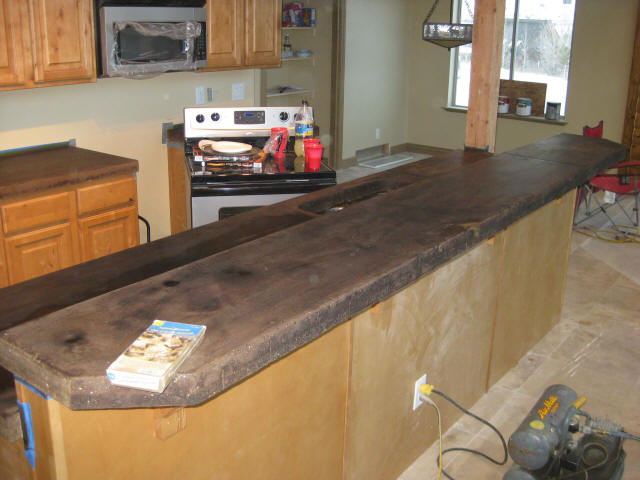
Common Mistakes to Avoid
One common mistake when acid-staining concrete countertops is insufficient surface preparation. Failing to clean the concrete thoroughly or not removing existing sealers and coatings can prevent the stain from penetrating properly, resulting in uneven or blotchy coloration. It’s crucial to start with a clean, smooth surface to ensure the best results.
Another mistake is not allowing the concrete to cure fully before staining. Applying the stain too early can interfere with the chemical reaction needed to achieve the desired color variations. Always ensure the concrete has cured for at least 28 days before starting the staining process.
Over-application of the stain is also a frequent error. Applying too much stain can lead to pooling and inconsistent color development. It’s better to apply multiple thin coats, allowing each to dry completely before adding the next, to build up the desired color gradually.
Skipping the neutralization step is a critical mistake. Failing to neutralize the acid residue after staining can result in ongoing chemical reactions that damage the concrete and compromise the integrity of the sealer. Always neutralize the surface thoroughly to stop the chemical process.
Finally, improper sealing can lead to a variety of issues. Using the wrong type of sealer, not applying enough coats, or failing to let each coat dry properly can leave the countertop vulnerable to stains, scratches, and wear. Proper sealing is essential to protect the stained surface and enhance its appearance.

How long does the acid staining process take from start to finish?
The acid staining process for concrete countertops typically takes several days to complete. The preparation phase, including cleaning and repairs, can take a day or more depending on the condition of the concrete. The actual staining process involves applying the stain and allowing it to react for 4 to 24 hours. Neutralizing and rinsing the surface takes additional time, and then the countertop must dry completely before sealing. The sealing process itself requires applying multiple coats with drying time in between, which can take a few more days. Overall, you should plan for at least a week to complete the entire process.
Can I use acid-stained concrete countertops in outdoor kitchens?
Yes, acid-stained concrete countertops can be used in outdoor kitchens, but there are some additional considerations. Outdoor countertops are exposed to the elements, so it’s crucial to use a high-quality, UV-resistant sealer to protect the surface from fading and weather damage. The countertop should also be properly maintained with regular cleaning and resealing to prevent damage from exposure to moisture, temperature fluctuations, and direct sunlight. With proper care, acid-stained concrete countertops can be a durable and attractive option for outdoor kitchens.
What colors can I achieve with acid staining?
Acid stains are available in a variety of colors, typically in earthy tones like browns, tans, greens, blues, and grays. The final color is influenced by the concrete’s composition, age, and porosity, so it’s important to test the stain on a small area or sample piece to get an accurate idea of the final result. Because acid staining involves a chemical reaction with the minerals in the concrete, the colors are variegated and unique, with natural-looking variations and marbling effects that add depth and character to the surface.
Is acid staining safe to do as a DIY project?
Acid staining can be done as a DIY project, but it requires careful attention to safety and detail. The process involves working with corrosive chemicals, so it’s important to wear appropriate protective gear, including gloves, goggles, and a respirator. The area should be well-ventilated to avoid inhaling fumes. Proper surface preparation, application techniques, and safety precautions are crucial to achieving good results and avoiding accidents. If you’re not comfortable working with chemicals or are unsure about the process, it may be best to hire a professional.
How do I maintain and clean acid-stained concrete countertops?
Maintaining acid-stained concrete countertops involves regular cleaning and periodic resealing. Clean the surface with a mild detergent and water, avoiding harsh chemicals and abrasive cleaners that can damage the sealer. Wipe up spills promptly to prevent staining, especially from acidic substances like vinegar and citrus. Depending on the level of use, reseal the countertop every 1 to 3 years to maintain the protective barrier and keep the surface looking its best. Using cutting boards and trivets can help protect the countertop from scratches and heat damage.
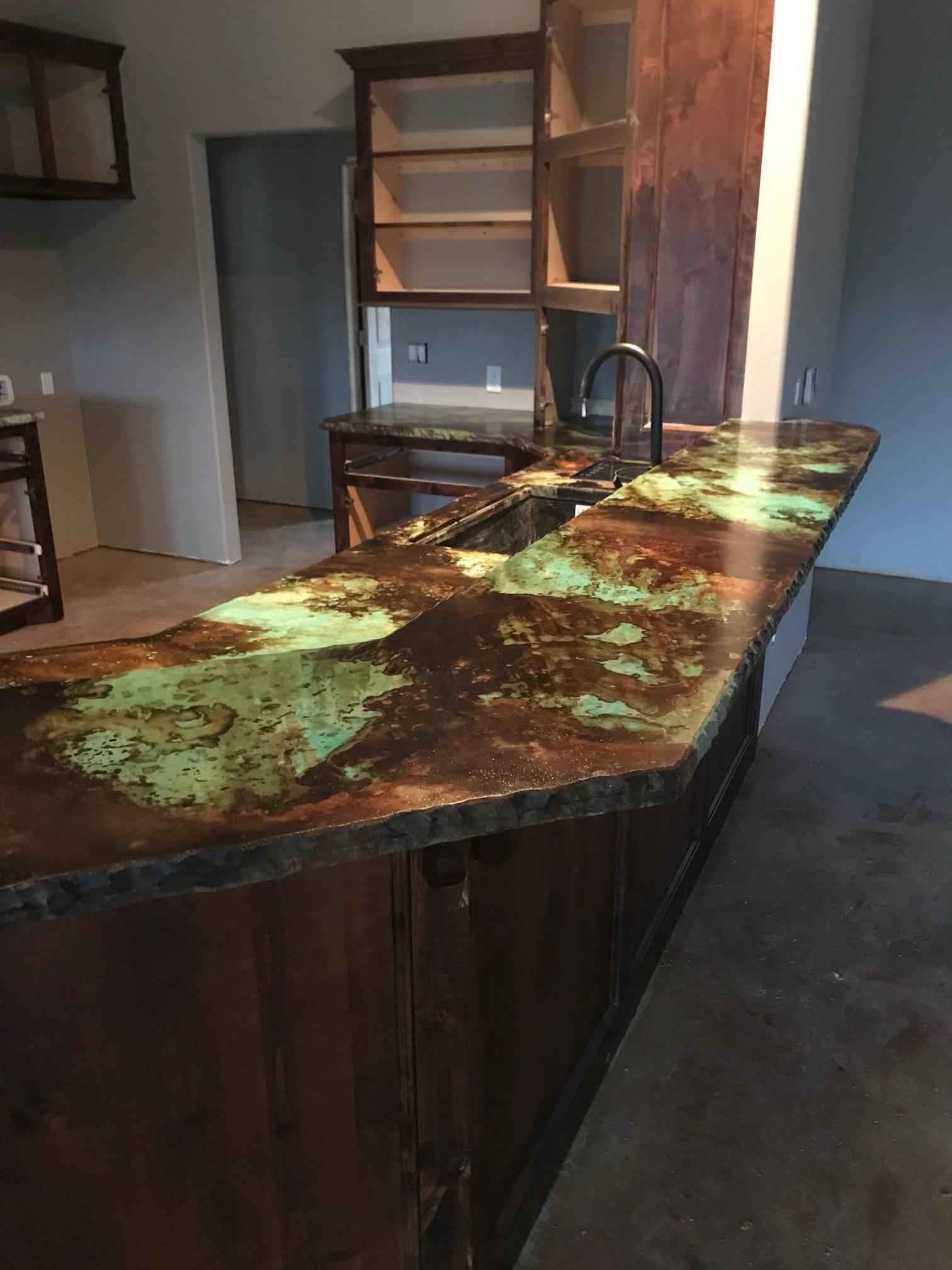
Acid Stain – Coloring Techniques for Concrete Countertops
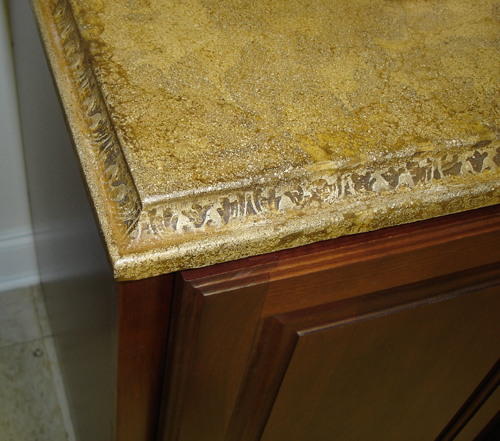
Secrets to Special Effects with Concrete Stains – Concrete Decor
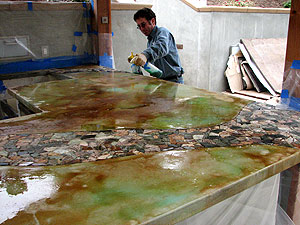
Related articles:
- Concrete Countertop Stain Removal
- How To Stain A Concrete Countertop
- Concrete Countertop Overlay DIY
- Epoxy Finish For Concrete Countertops
- Concrete Countertops With Farmhouse Sink
- Concrete Countertop Design Ideas
- How To Acid Stain Concrete Countertops
- Concrete Countertop Reinforcement
- How To Build Concrete Countertop In Place
- Concrete Countertops Outdoor